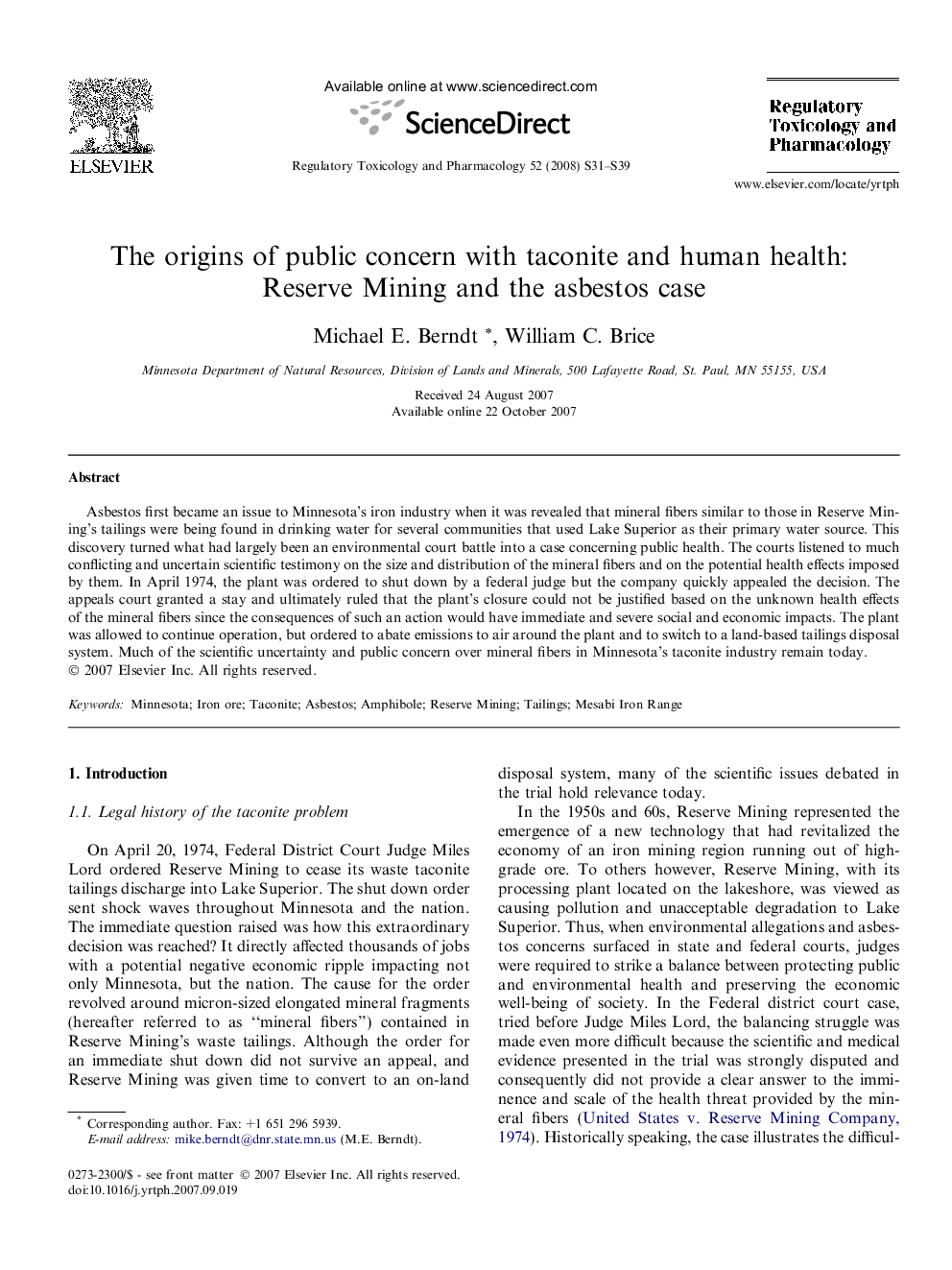| Article ID | Journal | Published Year | Pages | File Type |
|---|---|---|---|---|
| 2592865 | Regulatory Toxicology and Pharmacology | 2008 | 9 Pages |
Asbestos first became an issue to Minnesota’s iron industry when it was revealed that mineral fibers similar to those in Reserve Mining’s tailings were being found in drinking water for several communities that used Lake Superior as their primary water source. This discovery turned what had largely been an environmental court battle into a case concerning public health. The courts listened to much conflicting and uncertain scientific testimony on the size and distribution of the mineral fibers and on the potential health effects imposed by them. In April 1974, the plant was ordered to shut down by a federal judge but the company quickly appealed the decision. The appeals court granted a stay and ultimately ruled that the plant’s closure could not be justified based on the unknown health effects of the mineral fibers since the consequences of such an action would have immediate and severe social and economic impacts. The plant was allowed to continue operation, but ordered to abate emissions to air around the plant and to switch to a land-based tailings disposal system. Much of the scientific uncertainty and public concern over mineral fibers in Minnesota’s taconite industry remain today.
